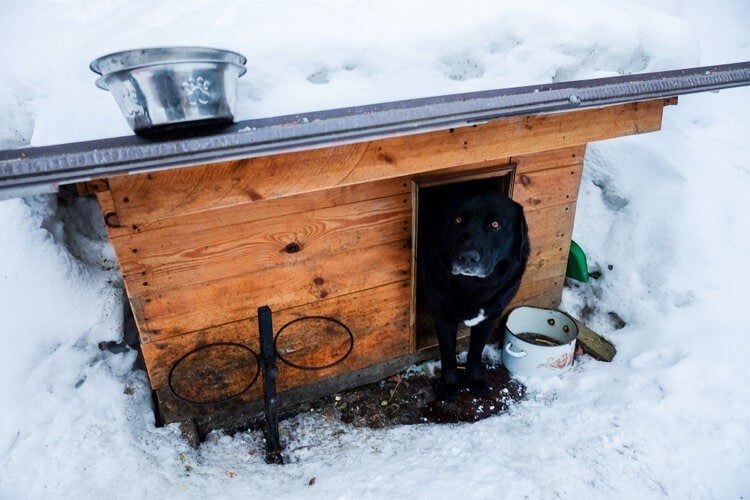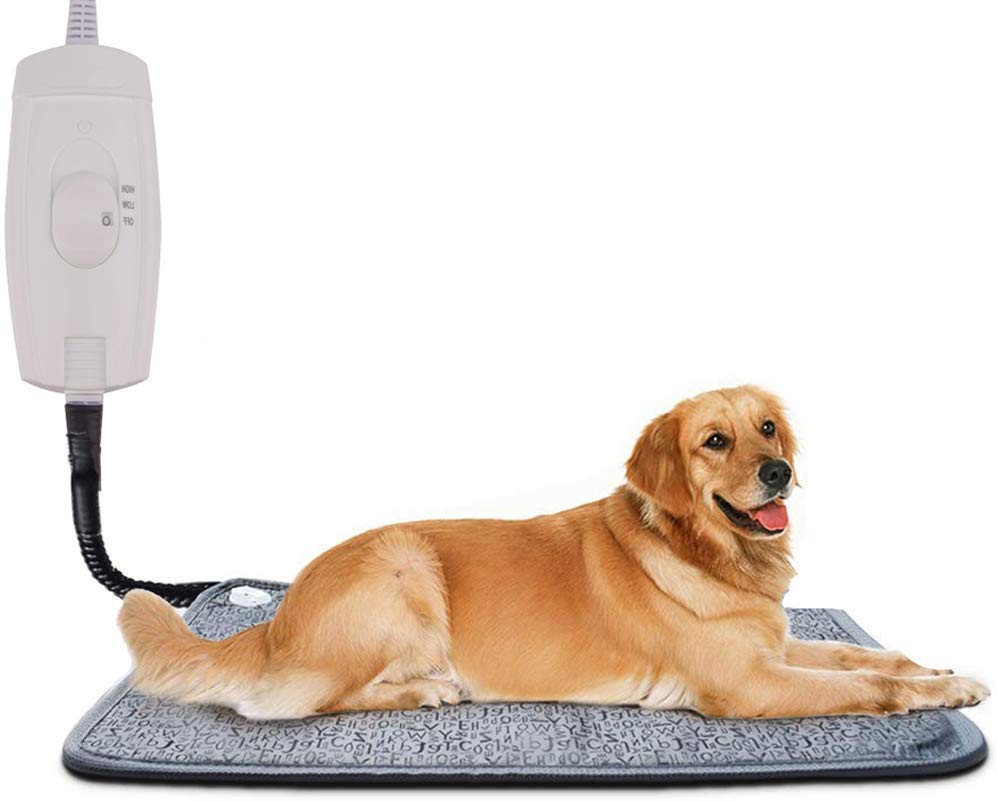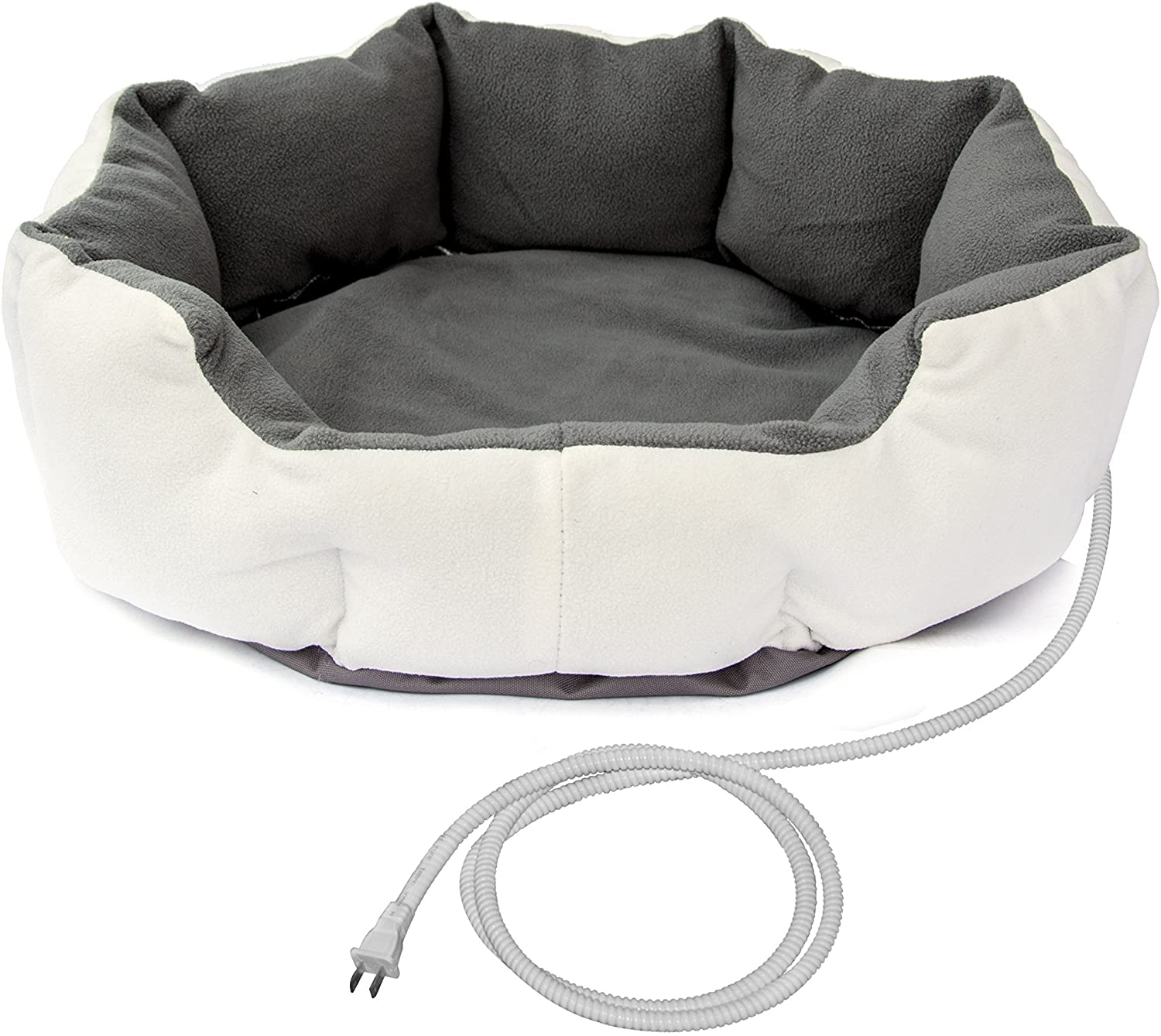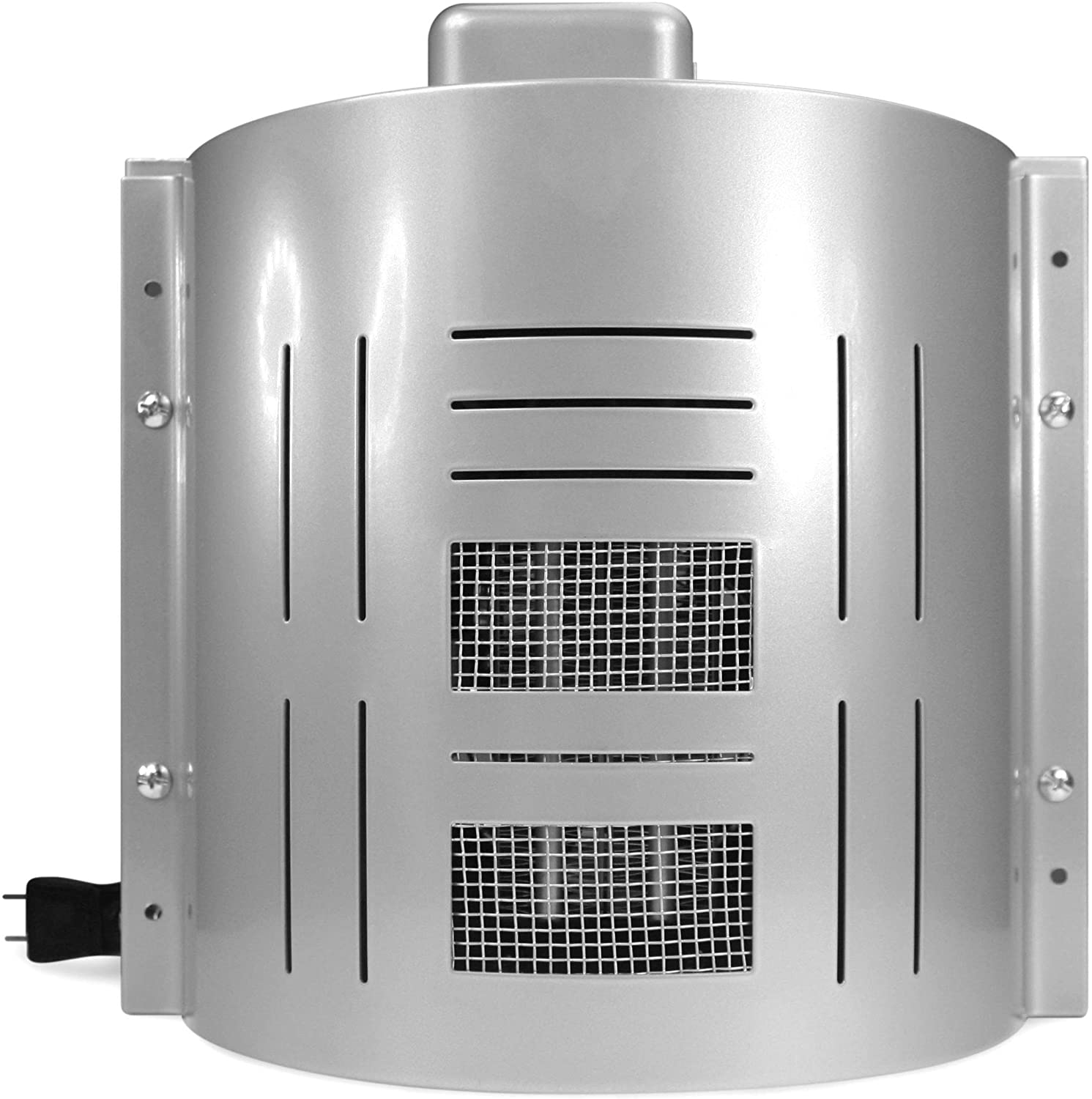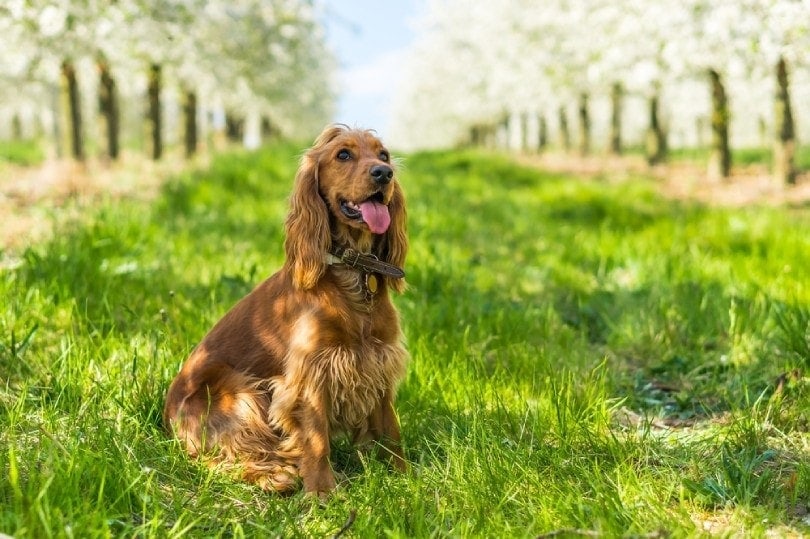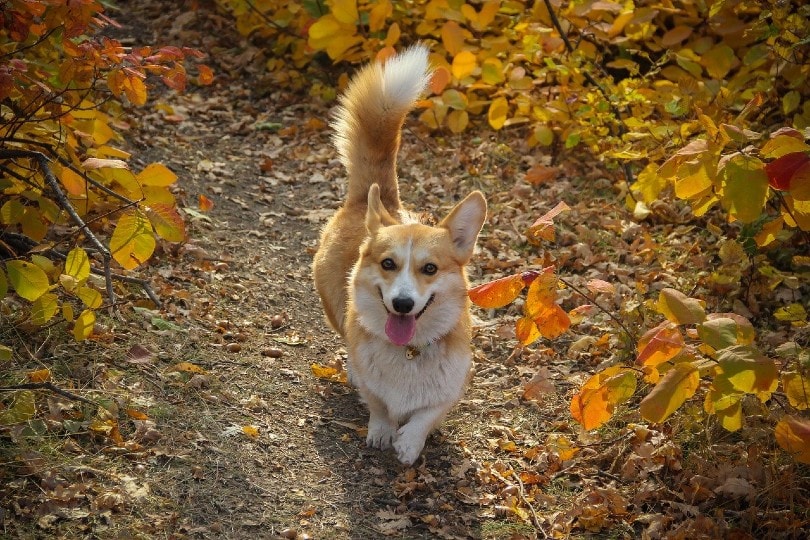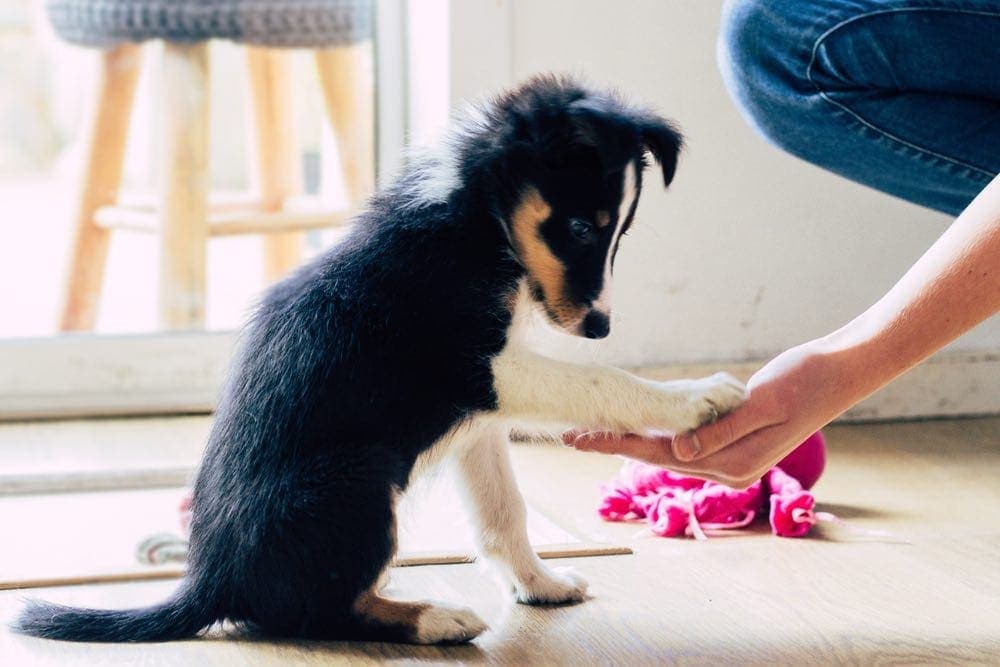You want your pup to stay comfortable year-round, even when she’s stuck outside. That’s why you got her a dog house in the first place.
But is that house really going to do enough to keep her warm and cozy during the winter? If you’re afraid that your dog might be stuck outside shivering, then you might want to consider heating her dog house.
Luckily, heating a dog house can be both cheap and easy. In the guide below, we’ll walk you through some of the best methods for turning a frigid dog house into a warm home your dog won’t want to leave.
How to Know Whether Your Dog House Needs Extra Heat
Not every dog needs a heated dog house, and you shouldn’t rely on your sympathetic heart to determine if yours does. Many dogs will do fine with a regular house, and in fact, some prefer a home they heat themselves.
The basic things you need to think about when determining whether to heat your dog house are your dog’s breed and build, the climate you live in, and whether the house will be used for whelping.
Dog Breed and Build
The breed is the most important factor to consider. Some dogs — like Huskies, Samoyeds, and Malamutes — are bred for cold weather, and they’ll likely be fine without any extra help. Short-haired or hairless dogs, on the other hand, will appreciate any help you can give them.
As a general rule, bigger dogs can handle cold better than smaller dogs, as they generate more body heat. This is especially true if your “big dog” is considered a “fat dog” (this isn’t a reason to let your pup’s weight spiral out of control, though).
However, many larger breeds are prone to arthritis and other joint problems as they age, and these conditions can be exacerbated by cold weather. Even a Siberian Husky may appreciate a heated dog house once she gets to a certain age.
Your Climate
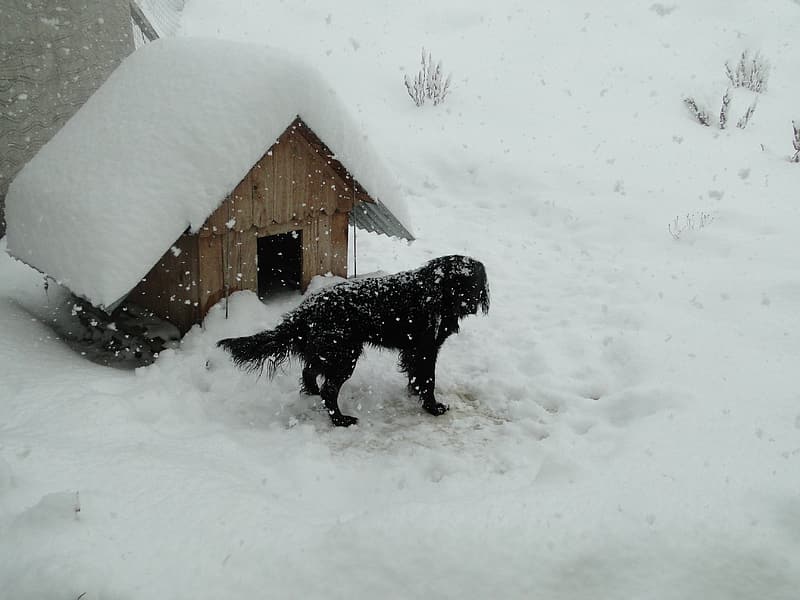
If you live in an area with mild winters, you may not need to heat your dog house at all, or you may only need to do so a few nights out of the year. You may be able to leave your dog out year-round, only bringing her inside or giving her extra heat on especially frigid nights.
If you live in a place with harsh winters, though, you’ll need to put more effort into solving the problem.
Typically, any dog should be fine until the mercury drops to around 45°F or so, at which point older, smaller, or short-haired breeds might start to be uncomfortable. In some places, that’s about as bad as winter gets, while in others 45° temperatures are cause for breaking out the shorts and flip-flops.
Wind chill can be more dangerous than the ambient temperature, so make sure that your dog’s digs are well-insulated. If you can keep the wind at bay, you may be able to avoid finding a way to heat the entire home.
See: The best insulated dog houses
Whelping
If you plan to use your dog house for whelping, then you’ll almost certainly need to heat it.
Puppies need lots of warmth, especially in frigid climates, and their mom might not be able to provide all they need, especially if she’s trying to stay warm herself.
Be careful not to go overboard, though, because if you make the house uncomfortably hot for the mother, she’ll likely stand up and move around a lot. This could make it difficult for the puppies to nurse, and it could even cause her to crush one accidentally.
Things to Think About Before You Add Extra Heat
You may be able to avoid adding extra heat to your dog’s home if you plan accordingly during the building or buying of the house.
A well-constructed dog house will do a great job of retaining heat without any outside help. These tips will help keep your dog’s pad warm and toasty:
- Make sure the walls, floor, and ceiling have plenty of insulation, and that wind and water can’t get through.
- Elevate the house off the ground by a few inches, especially if it will be sitting on a concrete slab.
- Add a door or flap to the entrance to keep the elements at bay.
- Offset the central chamber from the entrance, so that there’s less risk of cold wind getting to your dog while she sleeps.
- Keep the house small, so that your dog’s heat will fill it more efficiently. As a general rule, she should have enough room to stand and turn around, but not much more.
The 8 Ways to Heat a Dog House
If you’ve taken all the precautions listed above and you still feel like your dog’s house is too cold, there are a variety of remedies. Here are some of the best:
1. Heated Kennel Mat
This is may be the easiest and most effective way to heat a kennel. These mats are big, heated pads that your dog lays on, and they’re warmed via electricity, much like the heating pads that are sold for human use.
All you have to do is buy the mat, set it on the floor of the house, and run a power cord to it. You won’t find an easier solution, and since many of them are plush as well, your dog will even enjoy a little extra support while she sleeps.
You can even set the pad under the house if you prefer. This prevents cold from seeping through the floor, while also making it less likely that your dog will get uncomfortably hot.
Be careful, though, as these pads can be dangerous if your dog likes to chew on power cables. If that sounds like something your knuckleheaded mutt would do, you’ll either need to find a way to protect the cable (by using PVC pipe or something similar) or you’ll need to find another solution (or another dog).
2. Heated Dog Bed
A heated dog bed is essentially a heated pad, except with a whole lot more padding. They’re often designed for indoor use only, as they’re not durable enough to withstand the elements.
The covers can usually be removed and washed, so you don’t have to worry about seeing your pup curling up on a filthy bed every night. They don’t use a lot of electricity, either, so they’re a low-cost solution.
Beyond that, they have many of the same pros and cons of heated pads (including the fact that they’re not suitable for cord chewers).
3. Heater Box
As you probably guessed, given the name, a heater box is a metal box that warms up the entire house by emitting heat from a light bulb or ceramic emitter.
They’re often designed to be mounted in one corner of the house; this way, they don’t interfere with the dog’s sleeping space, and you don’t have to worry about your pup burning herself or breaking the bulb accidentally.
These devices are more expensive and harder to set up than heated pads or beds, and in many cases, they’re likely overkill. They’re best reserved for areas where the temperature stays below freezing for a large part of the winter.
However, they may be a good alternative for dogs who like to chew on power cords, as it’s much easier to hide the cable.
You May Be Interested In: Heat lamps for dog houses
4. Heater/AC Unit
If you really want to spoil your dog, you can add a heater/AC unit inside her house. Will she love it? Probably. Is it necessary? Almost certainly not.
These systems are ridiculously expensive to both buy and operate, and you can either buy the system separately and install it yourself or buy a house with one already installed. They can keep your dog warm in the winter and cool in the summer, though.
These machines can keep the temperature inside the house steady, so your dog can be assured that her house will be comfy whenever she goes inside. They’re also good for keeping mold and mildew at bay.
While these units serve their purpose, you can certainly find lower-cost alternatives that work just as well.
5. Moving the House Inside
If possible, an easy way to heat your dog’s house is to just move it somewhere it won’t be exposed to the weather.
The best choice is usually the garage. This will keep your pup out of the snow, wind, and rain, yet it won’t cause the house to get uncomfortably hot. Also, you won’t have to deal with dog hair and paw prints inside your actual house.
The biggest downside to this is the fact that you’ll have to sacrifice a lot of garage space, and if you’re like most people, that’s premium real estate.
Also, your dog may find lots of things to eat and destroy in there, and if you park your car in the garage, you increase the risk of running over her accidentally.
6. Heat It with a Dryer Hose
If your pup’s house is next to yours, you can run a dryer hose from the closest window to the roof of the dog house.
Start by cutting a piece of plywood to fit the window, and then cut a hole in the wood large enough for the hose to fit. You can then insulate it with sealant and a dryer flap to prevent too much air from escaping and to keep bugs from getting in.
The hose will take heat from the house to the dog house, allowing your dog to feel as comfortable as you are.
Of course, this will increase your heating costs somewhat, and it’s an incredibly ugly solution. It will make your dog feel like a member of the family, though (and she can eavesdrop on you, too).
7. 12-Volt Ceramic Heater
If you’re the handy type, you can get a 12-volt ceramic heater from an auto parts store and connect it to a gel cell battery and a continuous charger.
Then, it’s simply a matter of mounting the heater and placing all the electrical components on top of the house, out of your dog’s reach. You can add a thermostat if you like as well, so that the heater will only come on when the ambient temperature gets low enough.
This idea will almost certainly work, and it’s almost certainly more trouble than it’s worth. Also, if your dog can reach the roof of her house, it may not be a safe solution.
8. Solar Heating
If you’re fanatical about both going green and pampering your pup, you might want to consider installing a solar heater. Just a warning, though: this will be very complicated and labor-intensive.
You’ll need to buy panels and a charger, and then you’ll have to find a place to put them where they’ll get enough sunlight and avoid your dog’s teeth. Then, you’ll have to run the charger to a mounted heater inside the house.
This will be expensive up-front but may save you a tiny bit of money (and lessen your carbon footprint) over the long run. You’re likely better off making things easy on yourself and just getting an electric heater, though.
- Related Read: How Cold is Too Cold for Dogs in a House?
Which Way is Right for You?
As you can see, you have a wide variety of ways to heat your dog’s house, ranging from the stupidly simple to the ridiculously elaborate.
We can’t say which is right for your dog, but chances are that a heated mat or bed will be all your dog needs. They’re inexpensive, comfortable for dogs, and easy to set up, so they should make everyone in the family happy.
Of course, you could always invest in an expensive, complicated heating setup — but at that point, you might as well keep your dog warm by just lighting your money on fire.
Featured Image Credit: Sweetland Studio, Shutterstock

